#USS Oklahoma (BB-37)
Explore tagged Tumblr posts
Text

USS OKLAHOMA (BB-37) firing her main battery, off Guantanamo Bay, Cuba.
Photographed in 1921.
U.S. Naval History and Heritage Command: NH 44415
#USS OKLAHOMA (BB-37)#USS OKLAHOMA#Nevada Class#Dreadnought#Battleship#Warship#Ship#United States Navy#U.S. Navy#US Navy#USN#Navy#Guantanamo Bay#Cuba#Interwar Period#Interwar#undated#1921#my post
61 notes
·
View notes
Text
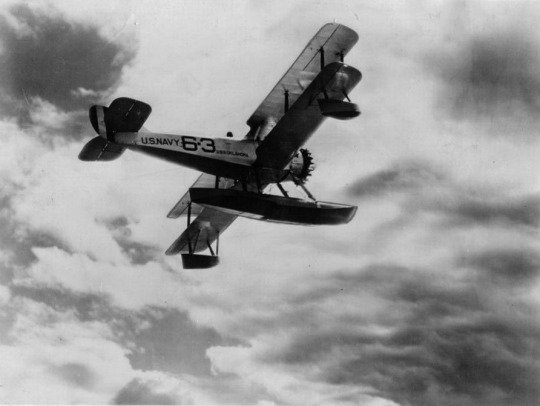
Vought OU-1 Seaplane assigned to USS OKLAHOMA (BB-37) flies overhead, near San Diego, California.
Date: February 23, 1930
source
#Vought UO-1#Vought OU#OU#Floatplane#Observation Plane#Spotter Plane#Seaplane#Aircraft#Airplane#USS OKLAHOMA (BB-37)#USS OKLAHOMA#Nevada Class#Dreadnought#Battleship#Warship#Ship#United States Navy#U.S. Navy#US Navy#USN#Navy#San Diego#California#West Coast#February#1930#interwar period#my post
33 notes
·
View notes
Text

Le cuirassé USS Oklahoma (BB-37) avec un camouflage expérimental – 1917
©Naval History and Heritage Command - NH 44401
#WWII#avant-guerre#pre war#marine américaine#us navy#marine militaire#military navy#marine de guerre#navy#cuirassé#battleship#classe nevada#nevada-class#uss oklahoma (bb-37)#uss oklahoma#bb-37#1917
8 notes
·
View notes
Text

USS Oklahoma (BB-37) and other battleships of the Pacific fleet line abreast with their guns trained to starboard, c. 1930.
77 notes
·
View notes
Text

SIG Sauer GmbH & Co.KG - SIG 1911 USS Oklahoma BB-37
68 notes
·
View notes
Text

USS Oklahoma (BB-37) a little less than a month after the effort to right her with winches began. The complex and slow process included pumping out water and patching holes as she rotated. In this picture she's at 34 degrees.
13 notes
·
View notes
Text
On the Brink of War!



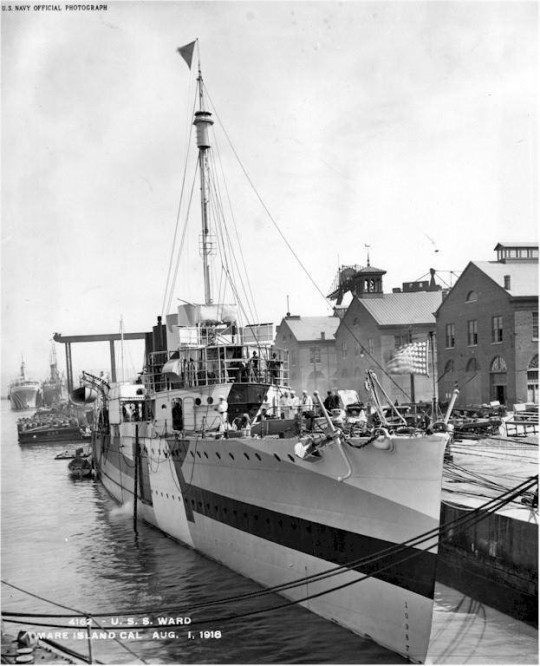
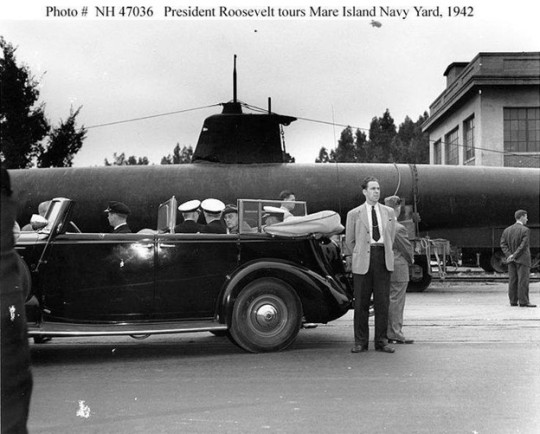
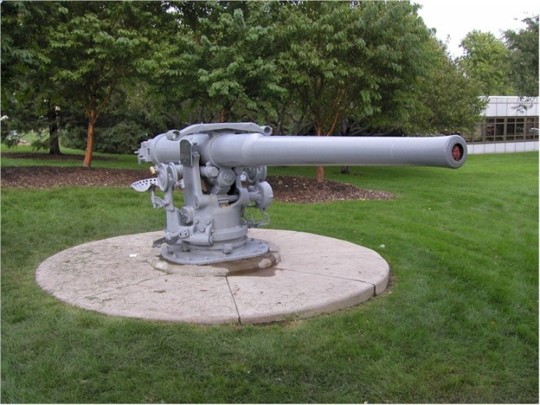
Early on the morning of 7 December 1941 a Mare Island built ship was just off the mouth of the entrance to Pearl Harbor. While the world was at war, the United States was at peace and the crew of the USS Ward (DD 139) undoubtedly anticipated another quiet sunrise in tropical paradise, but that was not to be. The morning proved surreal as crew members were suddenly engaged in a life and death struggle that presaged the massive aerial assault that was about to unfold. That crew drew first blood against the surprise Japanese onslaught on Pearl Harbor. Unlike the rest of Pearl Harbor’s defense forces, the Captain and crew of this warship were not caught sleeping.
The Ward, under the command of LCDR William W. Outerbridge, was conducting a precautionary patrol off the entrance to Pearl Harbor. This was his first command and his first day in command. Then at 03:57, he was informed by visual signals from the coastal minesweeper USS Condor of a submarine periscope sighting within the "Defensive Sea Area." Submarines were required to travel surfaced in that area, but this one was mostly submerged. Ward began searching for the contact and several hours later Ward's lookout spotted the conning tower of a midget submarine. By then the destroyer had increased its speed to 20 knots and range was down to 100 yards. The Ward opened fire with a 4” round. The Ward was now steaming at more than 22 knots and, as she closed to 50 yards, the gunners fired a second 4-inch shell almost straight down at the sub’s conning tower. The shell struck the base of the midget submarine's conning tower blowing a 4” hole through its port side. This explosive shell is thought to have instantly killed both crewmembers. Ward continued over the submarine’s bow, which bounced around and floundered for a few seconds then sank out of sight. Capt. Outerbridge swung his ship hard around and ordered four depth charges to be dropped on the spot where the sub was last seen. Six minutes after opening fire on the sub, at 06:51, Captain Outerbridge signaled 14th Naval District Headquarters:
“WE HAVE ATTACKED FIRED UPON AND DROPPED DEPTH CHARGES UPON SUBMARINE OPERATING IN DEFENSIVE SEA AREA.”
Unfortunately, that warning did not cause the island's defense forces to go on alert, nor would the newly installed radar operators report nearly an hour later:
"LARGE NUMBER OF PLANES COMING IN FROM THE NORTH, THREE POINTS EAST."
The operator taking that report passed on the information repeating that the operator emphasized he had never seen anything like it, and it was:
"AN AWFUL BIG FLIGHT."
Of course, we now know that flight was the first wave of the Japanese aerial attack and at 07:45 the attackers achieved complete surprise. In addition to the success of the aerial attack, two of five Japanese midget submarines made it into Pearl Harbor, and one is believed to have fired a torpedo that struck the USS Oklahoma (BB-37) which then turned turtle and sank. The next day President Roosevelt would declare "I ask that the Congress declare that since the unprovoked and dastardly attack by Japan on Sunday, December 7, 1941, a state of war has existed between the United States and the Japanese Empire." America was engaged in what was the bloodiest war in world history. Ward was built at Mare Island in a still unbroken record of 17 days. Under the pressure of an urgent World War need for destroyers; her construction was pushed rapidly from keel-laying on 15 May 1918 to launching on 1 June and commissioning on 24 July 1918. While she was built too late to contribute to WWI, she performed admirably in the first encounter with the enemy of World War II. Her sinking of the Japanese submarine was not credited for years, but then in 2009 the submarine was located by researchers from the University of Hawaii. It was found 1200 ft down off the entrance to Pearl Harbor with a visible shell hole at the base of the conning tower just as LCDR Outerbridge reported 68 years before.
Dennis Kelly
#mare island#naval history#san francisco bay#us navy#vallejo#Ward#Destroyer#Pearl Harbor#world war 2#world war ii#world war two#Japanese#submarine#december 7
0 notes
Text
This is a cool graphic, the keel has been laid for the first Block V Virginia-class submarine, the future USS Oklahoma (SSN-802). Named to honor the 429 heroes lost aboard USS Oklahoma (BB-37) at Pearl Harbor on Dec. 7, 1941.

0 notes
Photo
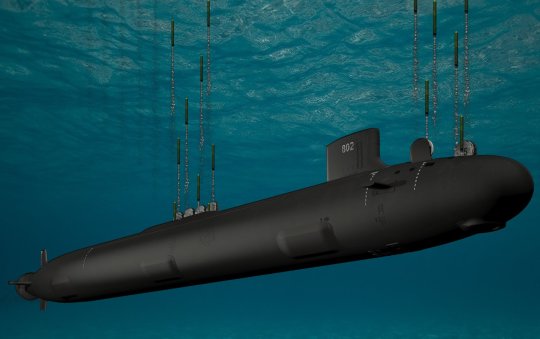
Deepest honors....
The United States Navy will name the first two of it’s newest-design (Block V) Virginia-class fast-attack submarines in honor of the crews of a pair of battleships forever enshrined in the memory of the Japanese attack on Pearl Harbor.
The two submarines will be named USS Oklahoma (SSN-802) and USS Arizona (SSN-803).
During that infamous attack that began World War II in the Pacific in 1941, the first group of Japanese torpedo bombers attacked the port sides of battleships moored at Ford Island in Pearl Harbor.
Eight torpedoes hit USS Oklahoma’s (BB 37). In less than 12 minutes, the battleship rolled over until its masts scraped the harbor’s bottom, trapping hundreds of men inside and under the water.
In the first few minutes of the attack, multiple torpedoes also hit USS Arizona (BB 39). In addition, a dropped-bomb penetrated Arizona’s armored deck near the ammunition magazines in the forward section of the ship, causing a massive explosion that killed 1,177 sailors and Marines on board.

Pennsylvania-class battleship USS Arizona (BB 39)

Nevada-class battleship USS Oklahoma (BB 37)
From the Secretary of the Navy’s recent announcement: “Truly, there is no greater honor I can think of for the Navy, the Marine Corps and the nation than to build and commission into active service two state-of-the-art American warships carrying the spirit of those heroes of the Greatest Generation, as well as that of their families and the Grand Canyon [Arizona] and Sooner [Oklahoma] states as they sail through a new American maritime century.”
The two new submarines are currently funded (around USD$2.7 billion each) and on long-lead-time order. They'll begin construction soon....and join the active Fleet in a few years.
And the spirits of those lost in these great national-naval-human disasters will be resurrected again....back at sea....reverent and proud.
________________________
>>CLICK the top photo to get a closer look at what the new USS Oklahoma (SSN 802) -- and expected eight Virginia-class Block V sister subs -- will look like in battle (launching cruise and medium-range missiles)....
#warships#Virginia-class#submarines#U.S. Navy#Navy#USN#history#Pearl Harbor attack#World War II#USS Arizona (BB 39)#USS Arizona (SSN 803)#USS Oklahoma (BB 37)#USS Oklahoma (SSN 802)#Arizona#Oklahoma#honors#remembrance#military#Greatest Generation#U.S. Marines#USMC
7 notes
·
View notes
Photo

An F5L prepares to take off in support of naval gunfire practice, 15 March 1921. In the background are USS Florida (BB-30) and USS Oklahoma (BB-37)
137 notes
·
View notes
Text

A Loening X02L-2 being launched from the catapult attached to turret 3 of USS Oklahoma (BB-37).
Date: October 1930
source
#Loening 02L#Loening OL#Observation Aircraft#Floatplane#USS Oklahoma (BB-37)#USS Oklahoma#Nevada Class#Dreadnought#Battleship#Warship#Ship#October#1930#interwar period#my post
54 notes
·
View notes
Text
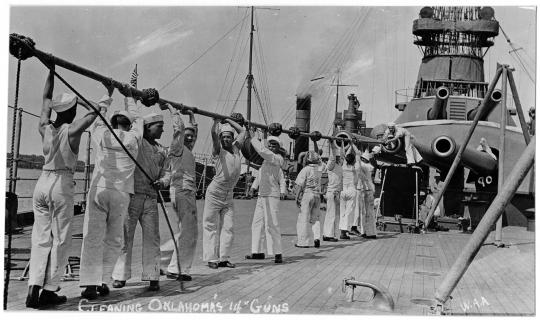
Nettoyage des canons de 356 mm du cuirassé USS Oklahoma (BB-37) – 1916
©Naval History and Heritage Command - NH 44422
#avant-guerre#pre-war#marine américaine#us navy#marine militaire#military navy#marine de guerre#navy#cuirassé#battleship#classe nevada#nevada-class#uss oklahoma (bb-37)#uss oklahoma#bb-37#1916
14 notes
·
View notes
Text
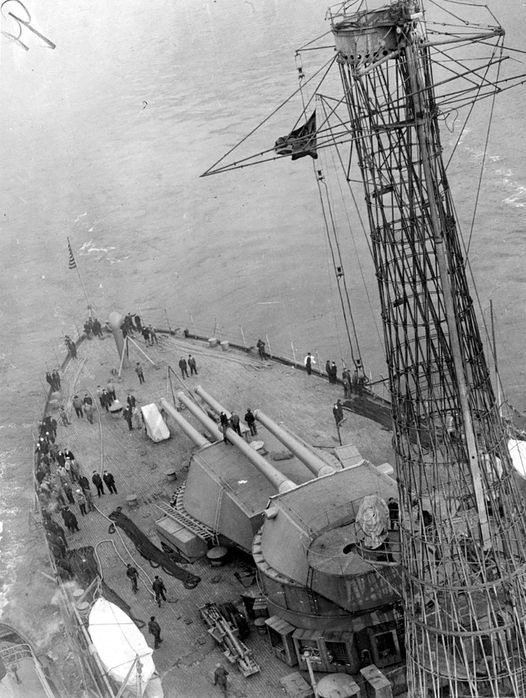
USS Oklahoma (BB-37) passing under the Brooklyn Bridge, during her trials period 1916.
61 notes
·
View notes
Photo

SIG Sauer GmbH & Co.KG - SIG 1911 USS Oklahoma BB-37
18 notes
·
View notes
Photo
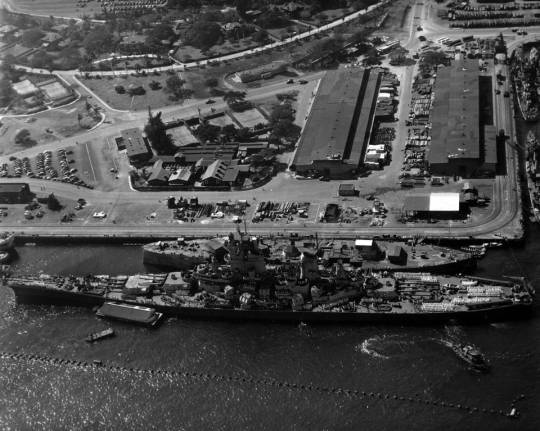
Iowa-class battleship USS Wisconsin (BB-64) is tied up outboard of the hulk of USS Oklahoma (BB-37), at the Pearl Harbor Navy Yard, Hawaii. 11 November 1944
69 notes
·
View notes
Photo

The U.S. Navy battleship USS New York (BB-34) leads USS Nevada (BB-36) and USS Oklahoma (BB-37) during maneuvers, in 1932. The aircraft carrier USS Langley (CV-1) is partially visible in the distance. 1932 USN Image https://www.instagram.com/p/Cgau_JKr9Qh/?igshid=NGJjMDIxMWI=
1 note
·
View note